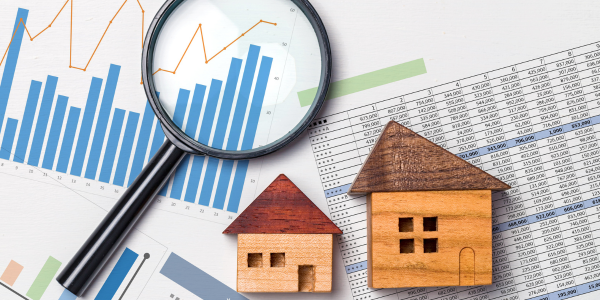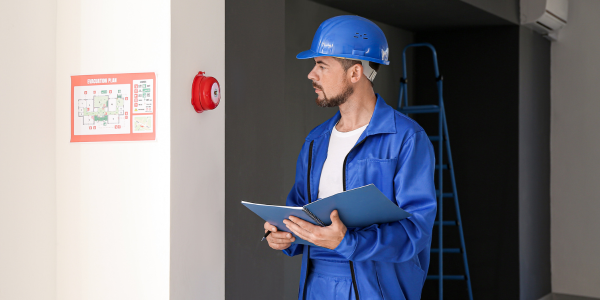Fire safety – it’s not just about the building!
How well do you know your homes and tenants?

That’s the question social landlords need to be able to answer!
They need to know this to:
- ensure they fulfil their building and fire safety responsibilities
- meet the forthcoming consumer standards
- address damp, mould, and condensation (DMC)
- plan how to deliver net zero carbon
To do this they will need to know what their properties are constructed from, what materials have been used, whether there is DMC, what the internal environmental is like and who lives in each property. The Regulators expect them to know this for each home. It is no longer adequate to use sample surveys and cloned RdSAP data because each home is different and each household is different.
Introduction:
The requirement for social landlords to know their stock and each home’s condition, as well as those who live in them comes from a range of new regulations. Initially, after the Grenfell Tragedy, they had to know if there was unsafe, combustible material used in any cladding. This was on top of the fire risk assessments they had been carrying out after the Lakanal House fire. In addition, they have to determine the structural stability of existing buildings, particularly higher risk ones, under the Building Safety Act.
The Rochdale Tragedy shone the spotlight on unhealthy conditions in homes as a result of damp, mould, and condensation. Landlords have to know which homes have conditions that pose a risk to the health of their residents and to address those risks.
With the forthcoming Regulator of Social Housing’s Consumer Standards, the expectation is that they need to know the condition of each home, assess the risk to occupant’s health, and remedy these unhealthy conditions. The Regulator’s consultation made clear that this would involve physical inspections of each home but did not specify how frequently homes should be inspected. Demonstrating to the Regulator that they did not have homes constructed with RAAC, posed another challenge because many landlords do not have the original drawings. Some landlords awarded SHDF funding have struggled to deliver schemes to Government timetables, often as a direct result of poor stock knowledge. They risked losing their funding.
What should landlords be doing?
They need to plan and start building this detailed stock condition and resident knowledge by considering all the information they need to manage their stock to ensure they are providing warm, safe and healthy homes for their tenants. To start, they should review the information they already hold and its reliability / accuracy. For example, has it been cloned from a stock condition survey of a sample of homes based on archetypes? If it has, they need to check how accurate these assumptions are – using information from tenants, visiting staff (such as gas engineers, housing officers and response repairs contractors) to verify assumptions. While the Regulator will expect physical inspections, these are only a snapshot of the property’s condition and need to be supplemented by information and data from sensors monitoring a range of internal environmental conditions to give an up-to-date picture. The NHMF is working with Oxford Brookes University to explore how ‘Computer Vision’ could be used to provide an accurate picture. This was featured in a recent webinar and explored further at the NHMF Conference.
How can landlords find the missing information?
The starting point should be a desktop study to review what information they hold and its reliability (is it cloned data?). This will highlight the information they are missing for an accurate picture of the condition of each home. Any missing information needs to be found or collected. For example, where landlords do not have as-built drawings, they may be able to find these in LA records – either drainage or Building Control departments (pre-1985, Building Control in London was carried out by District Surveyors). Additional information can be found from contractors carrying out response repairs, planned maintenance and projects, as well as from fire risk assessments. Rather than just getting the information to comply with one set of regulations, such as the Building Safety Act, landlords should consider identifying all the information they need, or might need, to manage their stock. The benefits of this approach were shown by NHMF Award winners - Orbit and Parametrix where the landlord decided to take a holistic approach to collect all the information they needed to keep their homes in good condition, and to deliver on their decarbonisation plans. As a result of using technology, they did not proceed with some planned improvements because the analysis showed there could be unintended consequences. This saved money and prevented the risk of making homes worse.
It is only when all these avenues have been exhausted that landlords might need to consider commissioning more intrusive investigations of the building structure, its construction, and materials.
Why do landlords need to collect all this information now?
One important driver will be the Building Safety Act, where those existing HRBs that have been registered, will need to develop their building safety reports as part of their application for a Building Assessment Certificate. Without this, it will not be legal for such buildings to be occupied! In addition, they need to develop Resident Engagement Strategies as part of the Principal Accountable Person’s responsibilities. Landlords already have to comply with the Fire Safety Act and collect information on Tenant Satisfaction Measures for the Regulator of Social Housing (RSH). In 2024, they will need to meet the RSH’s Consumer Standards.
To meet EPC Band C requirements and to deliver net zero carbon strategies, landlords need an accurate picture of each property, such as its construction and actual energy performance. Without this, they cannot bid for or deliver SHDF projects successfully.
Both the Housing Ombudsman and the RSH expect social landlords to be proactive to better manage their stock and ensure they are maintaining homes that are safe, warm, and healthy for their tenants. Being proactive in assessing all the information they need and collecting it now. While this may be more expensive in the short term, it is an investment, delivering a better, more cost effective and efficient service for their tenants.


